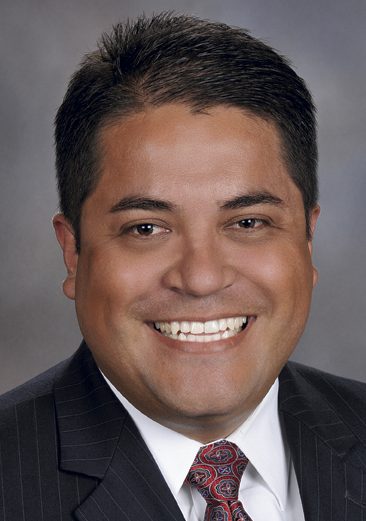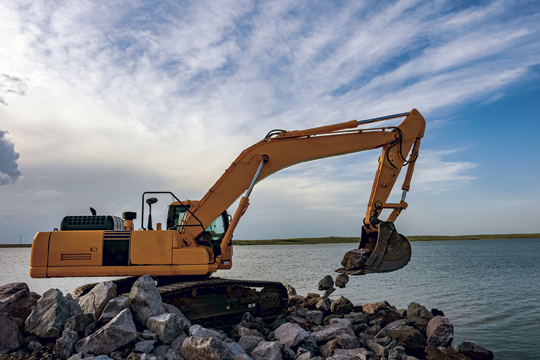LEVERAGING TELEMATICS FOR CONSTRUCTION CLIENTS
Agents can play a key role in ensuring that measures are in place to prevent added expenses
By Ivan Castaño
Agents working with commercial clients understand the importance of strong business auto coverage for customers with fleet vehicles. But even with the best coverage, determining liability in an accident involving a fleet vehicle can be complicated and sometimes leaves businesses as easy targets for lawsuits. As construction businesses rebound from COVID-19’s effects, agents can play a key role in helping them ensure that measures are in place to prevent added expenses.
Consider this scenario: An insured is cut off by another driver while driving a company truck to a jobsite, resulting in a collision and damage to the vehicles. While the insured claims the other driver was driving erratically before cutting him off and causing the accident, the burden of proof is actually on the insured to confirm they were not in any way at fault. Without that proof, their carrier may be forced to settle following an investigation. Are you confident your clients would be prepared in such a scenario?
Improving clients’ defense with telematics
This example emphasizes the importance of mitigating risks whenever possible to prevent additional expenses when an accident occurs. A great first step toward improving your clients’ defensive abilities is talking with them about vehicle telematics and dashcams.
[E]ven with the best coverage, determining liability in an accident involving a fleet vehicle can be complicated and sometimes leaves businesses as easy targets for lawsuits.
Nationwide’s latest Agent Authority research revealed that construction business owners are prime candidates for the benefits that telematics can provide. According to the survey, just four out of 10 construction business owners are currently utilizing telematics, yet 80% of those who do use telematics believe it plays a critical role in their business operations.
Further, most of those who use the technology are not taking full advantage of the benefits offered, as construction owners indicated that they primarily use telematics to:
- Track overall mileage of vehicles (70%)
- Evaluate employee driving behaviors (67%)
- Utilize the data to save on fuel costs (64%)
This shows that agents have a strong opportunity to help their construction clients implement vehicle telematics systems and partner with carrier-side loss control specialists to most effectively use the technology to improve driver safety and prevent losses. The need is certainly there, with more than one-quarter of construction business owners saying they experienced fleet vehicle accidents in the last year and 77% of owners listing the safety of employees driving company vehicles as a top concern.
Benefits for construction clients
Although vehicle telematics were originally designed for use in trucking, telematics capabilities and features have advanced to a point where it feels like these systems were built for the construction industry.
Determining who’s at fault. Now considered a best practice for managing fleet risks, dashcams provide valuable video evidence to help with documenting accidents and determining liability. Stand-alone dashcams connect to a power source in the vehicle and can offer forward-facing, driver-facing or even side- or rear-facing cameras to provide clear evidence of what happened and resolve claims more quickly. Telematics-based dashcam systems document accidents but also provide a host of safety management-related services like tracking driving behaviors and coaching drivers.
Tracking equipment location. Many systems offer asset trackers, enabling contractors to know the location of all their equipment—not just vehicles—including powered and non-powered equipment like bulldozers, skid loaders, trailers and air compressors. The locations can be easily tracked through a single portal or smartphone app. Need to know when building supplies will arrive or where the closest grader is? Just check the app.
Monitoring vehicle usage outside of business hours. Many firms allow staff to take vehicles home at the end of the day. While this helps them depart directly to jobsites in the morning, it also opens the door to potential concerns about after-hour use or even unauthorized use by family or friends. Many telematics systems will alert business owners when a vehicle is operated outside of normal work-related hours. In addition, curfew alerts can serve as a theft notification for vehicles parked in the yard or on a construction site.
Enhancing customer service. Telematics can also help contractors improve their responsiveness and customer service. For example, staff can tell exactly where their technician is when a customer calls, without sending a distracting text or call to the driver. Businesses can also use “closest to location” features to quickly identify the closest vehicle able to respond to emergency calls. Additionally, they can measure on-time performance and verify billing using historical trip maps and arrival and departure times.
Monitoring vehicle conditions. Many telematics systems can notify drivers or shop personnel when maintenance is due based on tracked mileage, or if an engine problem exists. Staff can also indicate when maintenance is completed, triggering the next cycle. This capability is particularly helpful when vehicles are taken home and aren’t regularly inspected and maintained since they’re not seen by the shop as often.
Improving driving behaviors. Finally, contractors can greatly benefit from enhanced safety features to improve the driving behaviors of their employees by monitoring a driver’s speed, hard braking, cornering and harsh acceleration events. New gamification features, like those offered through our Vantage 360 program, allow drivers to see their own safety scores, review how they did on each trip, and view how they’re performing compared to co-workers.
Efficiency during COVID-19
Nine out of 10 business owners said they’ve invested in technology to increase the efficiency of their operations due to COVID-19’s impacts. They also want to hear from their agents—89% trust their agent’s guidance and more than one-third are interested in receiving additional resources from their agent to help implement new technology.
Now is a great time for agents to proactively engage customers about telematics and dashcams as options to increase productivity, improve fleet safety, and potentially serve as an added layer of defense in the event of an accident. While telematics usually requires an up-front investment, the efforts can quickly pay off on the back end through higher efficiency and safety.
When working with an insurer, look for a telematics program that offers options that include fleet safety and management capabilities as well as vehicle health, asset tracking and dashcam functionality.
An important point I regularly remind our partners: Just having the data isn’t good enough. You must also have someone regularly reviewing that data and taking action on it.
 The author
The author
Ivan Castaño is Nationwide’s construction director for the Central Atlantic and Southeast Regions.





